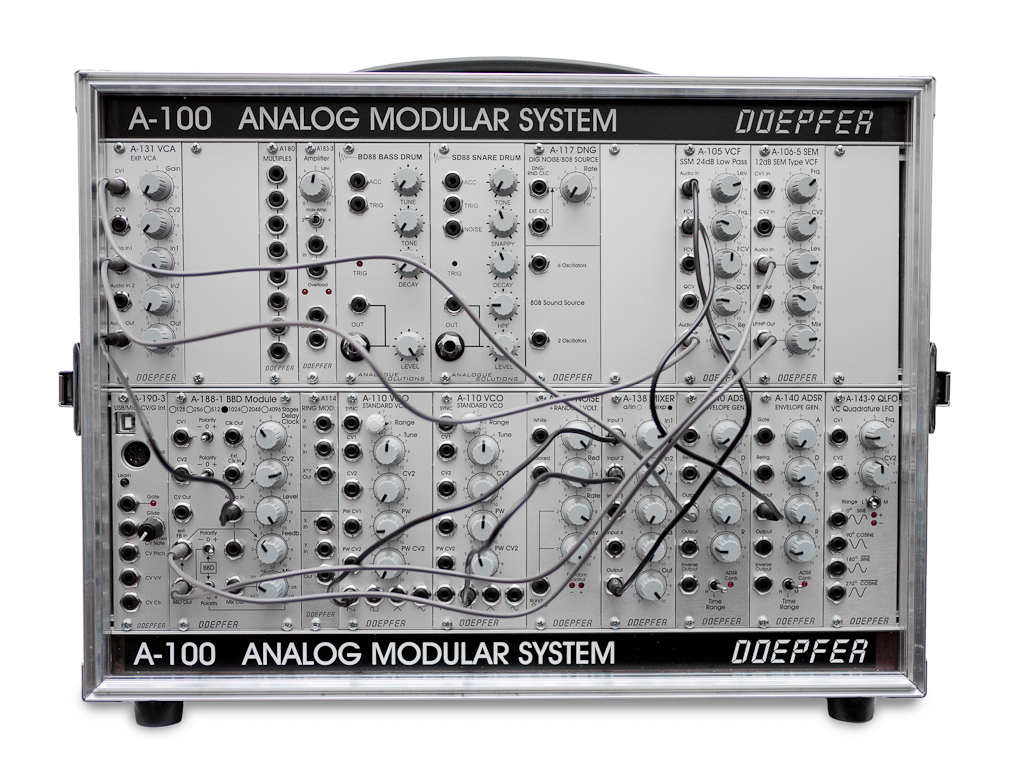As I posted late last month, I’m going to take the plunge into the world of modular synthesis via DIY. I alluded to a couple of modules I know I want to build. I also noted the big choice I saw upfront was what format to use. I thought I’d update where I am at in this process.
First of all, I have decided to go with the Eurorack format. The biggest reason is if I’d like to add professional modules, Eurorack is where the action is. There are Eurorack versions of the classic Wiard 300 series modules. Maths is one of the most talked-about modules out there. With some power conversions, the PAiA 9700 series can be used. This was the principal factor in pointing me towards Eurorack.
The big push to doing Synthesizer.com modules was ergonomics. Eurorack is a tighter space with generally smaller knobs. First, I have seen various people put up videos of living playing on Eurorack rights. Helen Vogelsinger is a great example who has been in heavy rotation on my listening of late. Second, because I am going DIY I can make my modules “big”. Looking at Modular Grid most Eurorack modules are around 4-12 HP wide, where 1 HP=0.2″/5mm. Eurorack has a minimum of just 2HP. The larger Synthesizer.com style modules start at 2.125″ wide. To get approximately the same surface area for the front panel except for very simple modules I’d start with a minimum width of 3.2″ or 16 HP.
For comparison, the above-mentioned Maths has 10 knobs and 25 jacks in 20 HP. I’ll be put 5 knobs, 2 switches, and 15 jacks in 16 HP for a VCO. That’s half the knobs and 60% of other connections in 80% of the space.
Speaking of a VCO, I’ve ordered CEM3340 chips for my initial pair of oscillators. Eddy Bergman has some improvements on the Look Mum No Computer version. The latter is pretty much just the datasheet version although he did add a tuner on his revised version. Perhaps the tuner could be useful as a separate module. Neither has a sine wave output. Eddy does provide a triangle to sine converter on the same post. I’m not sure if I want to integrate them into the module or have a separate module for it, perhaps a dual one.
I have two sets of schematics for both the Polivoks filter and a Buchla style low pass gate. In the latter case, one is based directly on Buchla’s drawings. A big question I have there is the characteristics of vactrols. Kristian built his own for one of his voltage-controlled amplifier modules. They are not terribly common at suppliers like Digikey or Mouser. I want to get a better feel for this component before I decide which to do.
I found out the Music From Outer Space Weird Sound Generator uses the 40106 for its oscillators. Instead of the hex grid oscillator, I had planned, I may use the oscillator part of that design, with all the weird, wacky, and zany outputs brought out front as well as the summed set. Then again, I may do my hex grid and the weird and whacky oscillator. If I do the MFOS WSG front end, I will include the filter as a module as well.
In terms of theory, my biggest step forward is understanding the difference between an Attack/Release envelope generator versus and Attack/Decay envelope generator. The former will stay high until the gate signal drops out. The latter begins the decay cycle when it reaches the high state even if the gate voltage continues. There is a good discussion over on Muffwiggler.
That is about all I have in terms of the project not quite two weeks out. I hope on the next update to have built something on the breadboard and have some schematics to share. I suspect that’ll be a breadboard version of the two modules I hope to derive from the Weird Sound Generator as I have most of the components already.





Be First to Comment